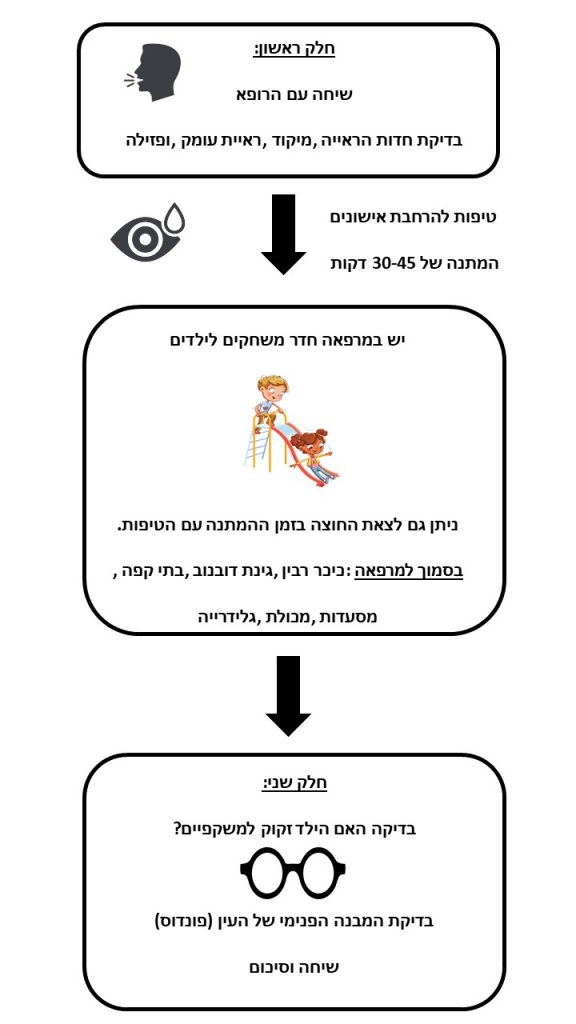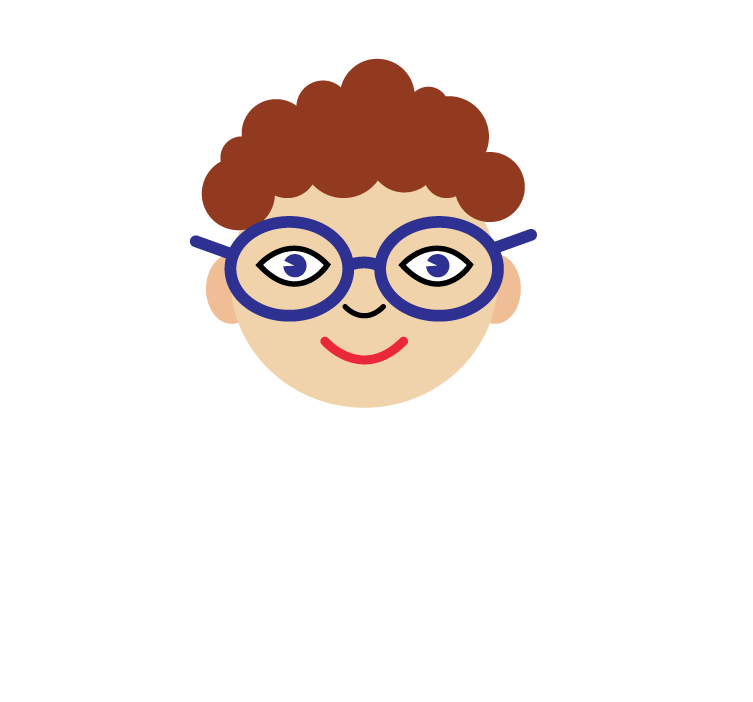:Your Child's Eye Exam
?What to Expect
Dear parents,
Welcome to my Pediatric Ophthalmology and Strabismus Clinic! My goal is to ensure superior and thorough care for your child.
On this page I would like to describe the expected testing procedure, so that you can prepare appropriately.
Firstly, you should know that there is a paid parking lot in the building itself, with a direct elevator from the parking area to the clinic. The name of the parking lot is "Beit HaCohanim parking lot" and it is located at 1 Zeitlin Street (Rabin Square) in Tel Aviv.
Clearly a stranger with a mask that uses eye drops and lights for testing can deter and scare young children. I find it very important that children have a positive experience during the test. I strongly believe that engaging children in the exam will improve their compliance and my care. I find it possible to create a pleasant and fun experience for ANY CHILD.
My clinic is decorated with characters from children's movies, and I also have a waiting room with toys, games, books and a small play area with a Gymboree, suitable for babies and toddlers. In fact, many children cry when they leave the clinic, because they had lots of fun.
What happens during the test?
In most cases the eye exam consists of two parts:
During the first part, I will check various parameters related to the child's vision. Among other things, visual acuity, convergence, depth perception, and strabismus (squint) will be examined. I will then use special eye drops, suitable for babies and children, to dilate their pupils for the second part of the exam. The drops may slightly blur the child's vision, especially the near vision. The drops work for 4-6 hours on average (in exceptional cases: 24 hours). You can behave normally following application of the drops but should be careful with children climbing on high appliances.
The second part of the exam takes place following a break time of 40-45 minutes for the drops to start working. For a thorough exam children cannot be tested beforehand.
You can spend the break time in the playroom in the clinic, or go outside to Rabin Square or the nearby Dovnov Garden to freshen up and get some food/drinks.
Following the break, I will check:
– The back (inner) side of the eye (Fundus exam) – making sure the structure of the inner eye is normal.
-Examination of the refraction error ("glasses prescription") of the child, i.e., whether he/she needs glasses or not. In many cases there are surprises, and the child needs glasses. If we do not check this, we will not know… even if the child seems to have good vision.
Important highlights:
Applying eye drops may cause anxiety for some parents and children. It is important to know that the drops are crucial for a thorough exam! They are given in a dose suitable for babies and children. They may sting for a few seconds, so I distract the children during the process, attempting to reduce their level of anxiety. I find it that the main reason for anxiety is related to the uncertainty and loss of control children experience during the application of eye drops. Usually a big hug from their parents alleviates any sadness or tears.
I advise parents not to use the word "hurt" near their children, as in my experience it increases their level of anxiety. Even if the parent tells his child "it will not hurt", the child tends to only hear the word "hurt".
The second part that may be challenging for parents of babies and very young children is the process of testing the refraction. In this test, I use a light torch for about 1-2 minutes. Occasionally parents are required to hold their child’s head straight, should the child resist this dazzling test. I do my best to distract children from the light, by whistling, playing songs, making noise, etc. Sometimes this does not work with babies and toddlers, and we do have to hold them straight for a minute or two. If you have any concerns about your ability to help me with holding the child's head straight for the test (if the child is resisting the test), it is recommended that you arrive to my clinic with another person (parent, friend, relative etc.), that can help during the test.
Please note that the total exam time may reach 60-75 minutes. Most of this time is due to break time following application of the eye drops (40-45 minutes), but also because this is a very sensitive and delicate test, requiring the cooperation of the child. Some children need more time to trust me and to allow me to perform the test. Furthermore, some children in my clinic suffer from eye diseases, requiring longer exam times.
Please be patient enough to ensure a thorough and in-depth examination of your child.
Wishing you good health!
Oded Lagstein, MD.


